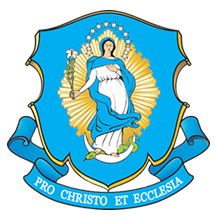
Saint Athanasius's Shrine (where a portion of his relics are preserved) under St. Mark's Cathedral in Cairo, Egypt.
By Kimberly Bruce
Those who maintain “There was a time when the Son was not” rob God of His Word, like plunderers.
So said St. Athanasius of Alexandria (feast day: May 2), considered the “Father of Orthodoxy” in both the Eastern and Western Churches. A holy Doctor of the Church (St. Gregory of Nazianzus called him the "Pillar of the Church"), he was her champion defender against the pervasive Arian heresy (which denied the divinity of Christ) during the fourth century.
Likely born in Alexandria, Egypt, c. 296 A.D., Athanasius was educated in grammar and rhetoric. His parents were known to be virtuous Christians. The story is told that one day, while looking out his window at the sea, the bishop St. Alexander saw young Athanasius and other youths playing. Athanasius was acting as bishop and baptizing the other boys. On questioning them, St. Alexander was so impressed with the theology Athanasius expressed that he declared the Baptisms valid! He decided they should all endeavor to enter religious life, and thereupon employed Athanasius as his secretary.
Into the desert
Around 315 A.D., St. Athanasius went into the desert, where he sought the renowned holy hermit St. Anthony of Egypt and became his disciple. Upon returning to Alexandria in 319, he was ordained to the diaconate, and served Bishop St. Alexander in fightiing heresies.
Of primary importance to St. Athanasius was the integrity of the Church’s Creed. Pope Benedict XVI, speaking on June 20, 2007, said St. Athanasius was “the most important and tenacious adversary of the Arian heresy, which at that time threatened faith in Christ, reduced to a creature ‘halfway’ between God and man, according to a recurring tendency in history which we also see manifested today in various forms.”
Saint Athanasius was present with Bishop St. Alexander at the Council of Nicaea in 325 A.D. when the term consubstantialis was unequivocally affirmed. (The term “consubstantial” is part of our Creed at every Mass.) This term, said Pope Benedict, “means that the Son, the Logos, is ‘of the same substance’ as the Father, he is God of God, he is his substance. Thus, the full divinity of the Son, which was denied by the Arians, was brought into the limelight.”
Patriarch of Alexandria
After St. Alexander’s death in 328, St. Athanasius was chosen to succeed him as Patriarch of Alexandria. Saint Athanasius spent his life in service to the Church, primarily as Bishop of Alexandria in Egypt.
Indefatigable in his defense of Church teachings, he was exiled five times between 336-366 by four different emperors and suffered many false accusations leveled against him by those who subscribed to Arianism. He spent a total of 17 years away from his bishopric, oftentimes in hiding to protect himself from those who violently sought his life, even hiding for four months in his father’s burial vault.
During St. Athanasius’ 45 years as bishop, he wrote many works benefitting the Church. Most of these were written while suffering in exile. His most famous work is his treatise on the Incarnation, De Incarnatione. In it, said Pope Benedict:
Athanasius says ... that the Word of God “was made man so that we might be made God; and he manifested himself through a body so that we might receive the idea of the unseen Father; and he endured the insolence of men that we might inherit immortality” (54, 3) ... The fundamental idea of Athanasius’ entire theological battle was precisely that God is accessible. He is not a secondary God, he is the true God and it is through our communion with Christ that we can truly be united to God. He has really become “God-with-us.”
Introducing monasticism
Saint Athanasius also wrote four letters on the divinity of the Holy Spirit; 30 “festal” letters for the faithful of Egypt; meditations on the psalms; and a biography entitled The Life of Anthony (the holy hermit), which became a “best seller” in his own day and introduced monasticism to the West.
The holy bishop died on May 2, 373. Saint Gregory Nazianzus said St. Athanasius’ death was “lamented by all good men; and the immortal glory of his name remained imprinted in their hearts.” He was declared a Doctor of the Church in 1568 by Pope St. Pius V.
Saint Athanasius, pray for us, and help us to perform the work of mercy of always defending the divinity of Christ and the truths of our Creed each day of our lives. Amen!
{shopmercy-ad}
















